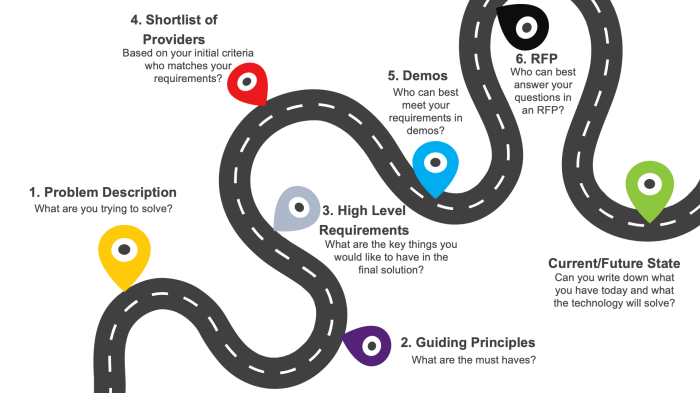Best Practices For Selecting & Implementing New Technology In The Life Sciences
By Don Davis, Ph.D., president and principal, 5280 Life Sciences Consulting, LLC

Regardless of the size of your company, manufacturing, quality, R&D, and other IT support systems and infrastructure can make or break your ability to focus on your crucial business functions. Software tools and their supporting hardware (technologies) can undoubtedly enable greater performance within your medical device, pharmaceutical, or biotech business. From centralization of data (e.g., research data in data warehouses) to data catalogs for providing visible metrics (analytics or business intelligence), technology today can help provide supporting information or key measurements for meeting customer or patient needs. Regardless of the type of technology implementation, how you select technology and how you implement it are two critical factors for any organization.
For most of us, the systems we use are tools for achieving business objectives. As critical as these systems and technology might be, picking the wrong partner to implement the technology will most likely cost you more than the money wasted directly on the technology. Choosing the wrong technology could inundate the company in developing plans to try to make the technology fit into an inappropriate environment. This can waste resources inside your company while you try to fit a square peg into a round hole. Choosing the wrong partner often means that when you need support or technical advice they are nowhere to be found or their support model is lacking. The time to best understand what you are buying and the partner you are getting it from is before you commit to buy.
Technology And Vendor Selection — A 7-Step Road Map
Using the road map below will best inform your journey in selecting the best technology and vendor for your business. This road map will force you to examine the following questions:
- What problems are you trying to fix with a new system or technology?
- What are the biggest factors that are going to impact your choice?
- Who can best supply the technology and provide proof that they can support their claims?
- What are the current state and the desired future state?
The road map has seven key steps:

Figure 1: Technology selection and implementation road map
- Start with the problem – What are you trying to solve? Are you manually tracking the information today? Who is affected? If possible, provide supporting numbers of users, timing, etc.
- Define the "guiding principles" in your selection – Guiding principles are things that you will not bend or compromise in the decision process. One of my main items for this list is that the provider must be a partner. Being a partner means that the company you select will not just do their work and go; instead, they will guide you based on their expertise.
- Outline high-level requirements – What are the key deliverables for the system at the start? These do not have to be detailed, but before implementation, you will need to provide detailed requirements to the vendor.
- Create a shortlist of providers – In the end, you need one to three vendors that you are going to run through your RFP process. In creating the shortlist, you can have quick surveys that look to narrow the list to vendors that, at a high level, can meet your guiding principles.
- Demos – In the demos, having a quantitative scoring sheet that lists your guiding principles and high-level requirements with scoring criteria will allow the project team to make better decisions. One of the most important goals of this exercise is to understand how much the provider's solution matches your requirements.
- Request for proposal (RFP) – In the RFP process, you are again using your high-level requirements to have the vendors more precisely answer how they will meet your needs. I like to have the vendor state which items will be met out of the box and what requires configuration, custom build, or cannot be met. Have the vendor outline both the costs for implementation and the ongoing maintenance fees.
- Current/future state – Define how the architecture uniquely supports the fix for the problem you are trying to solve – what do you want the solution to do in the end and how will the technology support it? By completing the items above, you should be able to write down what the current state is and what the desired or future state will be based on the solution that is chosen.
Regardless of your company's size, going through demos and an RFP process will be beneficial in uncovering items you want in the system and the vendor's ability to meet your feature requests. I highly recommend that these steps not be skipped, even if your organization has fewer than 10 people.
Note of caution: A prior client bought the sales pitch for a system that operated in the cloud that the system could be implemented without integration (interfacing with other systems). Think about it like this: if the software you are buying needs information from another system or if the software is sending information to another system, you require integration. When you purchase a system that will help your business as outlined above, often there is data before and after that will need to be "integrated." Define the integrations and ensure that the technical people who are doing the work confirm that your desired outcome is achievable. The integration of any system needs to be worked out in advance of selecting a vendor.
Implementation Best Practices
As you go through the process of implementing the new system, you should consider two essential items:
- In the current state and desired future state, what do you expect will be resolved at the end of the implementation and, if the impact is measurable, what metrics will you use? There might be a mix of internal thinking about what is needed and aligning with your vendor on how business-critical measurements can be achieved.
- If you are in an organization with a mix of users, do you need to think through the changes that people will go through (change management)? Sometimes, the impact on social change is more substantial than tactically implementing new software.
Depending on your company's size and complexity, implementation can take between months and years to implement. If stakeholders are not engaged in the project implementation, the following set of roles and reviews will help keep critical players engaged.
Roles
The key people in your organization can make or break any project. Just as important as the selection of the technology is selecting the team that will lead, plan, and support the project’s implementation.
- Project Manager – The person responsible for maintaining the schedule with the team, driving the project's execution, and playing a crucial role in facilitating all of the meetings described below.
- Project Team – The project team is the group of individuals responsible for the actual implementation of the technology. Additionally, depending on the system being implemented, many vendors offer project management of their own. You will still need an internal project manager to pull together teams and details internal to your organization. A vendor PM will help provide valuable input based on repeated implementations for other customers.
- Core Team – This team includes the project manager, the project team, and the stakeholders who will utilize the solution when complete. The core team needs to be made up of actual power users who will use the technology.
- Sponsor – The final role in support of a project is the project sponsor, who is ultimately the go-to person with an escalated project. When additional funding is needed, there are delays, or for some reason a decision cannot be made at the project team or core team level, this is the executive with whom they can work directly on a solution.
Meetings/Reviews
The meetings during the implementation will provide several key functions: to align and develop plans for implementation, for change management, to resolve issues, and to inform key stakeholders. The purpose and frequency of these meetings/reviews are covered below.
- Project Team Meeting – Project team meetings are frequently held to update individuals who are directly working on the project. Most project teams will need to meet at least once a week at a minimum.
- Core Team Meetings – For systems implementations, the core team comprises individuals who will be impacted by the technology that is being implemented. As the project progresses, the core team needs to stay close to what is happening, and they might be expected to provide information that supports the work that is happening in the project team. At a minimum, core team meetings should be held bi-weekly to ensure that stakeholders have the critical information needed and can provide their feedback.
- Steering Committee Meetings – Many organizations will be made up of executives who have departments that will be impacted by the implementation. Steering committees are often critical when the core team or project team cannot decide because it affects the broader organization. These should be held monthly at a minimum but more frequently if challenges arise where the executive team needs to be informed.
Implementing technology that supports your organization will provide a firm foundation for manufacturing, quality, and R&D and allow you to focus your efforts on the core competencies of your business rather than the infrastructure that supports it. These guidelines will provide a solid base for selecting the best technology and vendor, regardless of the technology.
About The Author:
 Don Davis, president and principal of 5280 Life Sciences Consulting, is an expert operations leader with a 30-year career in healthcare and life sciences. After decades of working for companies like GE, BD, and Roche, Davis now helps others improve their operational excellence, program and project management, analytics and KPIs, and IT systems and infrastructure, resulting in increased profitability and improved ability to scale their organizations.
Don Davis, president and principal of 5280 Life Sciences Consulting, is an expert operations leader with a 30-year career in healthcare and life sciences. After decades of working for companies like GE, BD, and Roche, Davis now helps others improve their operational excellence, program and project management, analytics and KPIs, and IT systems and infrastructure, resulting in increased profitability and improved ability to scale their organizations.
